Class Notes
By Samantha Kirby
Photos by Russell Cothren
In the Middle Ages, it took at least three animals to make a book: a goat, cow or sheep for the parchment; a bird for the quills used to letter the pages; and wasps, whose larvae secrete oils into oak trees to form a gall from which ink was made. In Dr. Joshua Byron Smith’s Signature Seminar “Manuscript,” students followed this medieval formula to create their own goatskin masterpieces, performing every step of the process themselves, short of raising the goats.
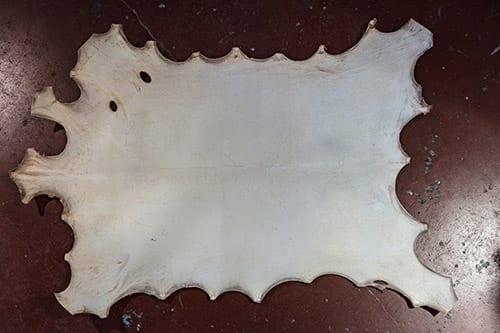
Tabula rasa: students begin the process by choosing goatskins.
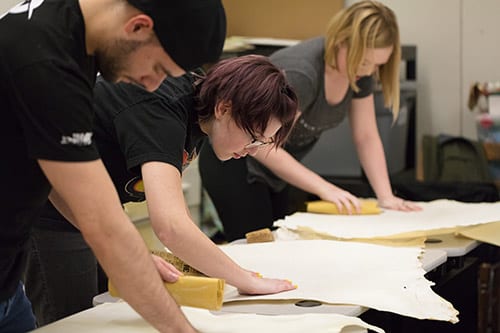
The students first had to sand down their skins to prep them for receiving ink. The class used sandpaper, but in the Middle Ages manuscript makers would have used sand, pumice, or a sanding loaf (powdered pumice or glass baked together with flour and brewer’s yeast) to refine their skins.
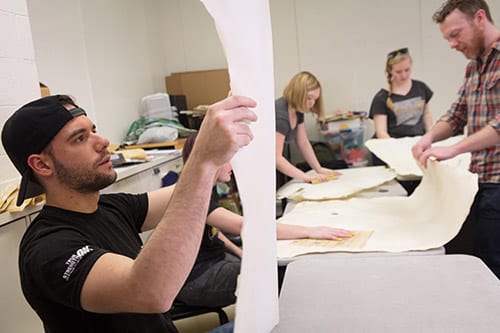
“Hold it up to the sun,” Smith instructs. “You can see where you’ve sanded too much or too little.” Emmanuel Brondino observes his work so far amid a fine cloud of goatskin dust.
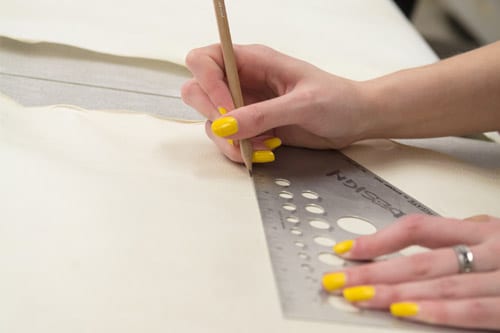
Once the goatskins are sanded to an appropriate thickness, the students embark on dry-point ruling to mark lines for cutting. If you look closely, you can still see the pores on the skin! These are just one of many natural qualities (including holes, pimples, etc.) that didn’t faze medieval scribes.
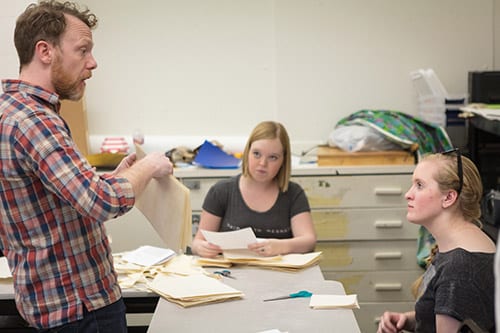
Smith instructs students Nina Andersen (left) and Kendra Grant in the art of folding their cut manuscript pages. (Yes, they had scissors in medieval times!)

Creating a manuscript is no easy task – it’s hard enough keeping up with the video tutorials, much less keeping track of which pages are yours and which are your neighbor’s!

Austin Araujo uses an awl to pokes holes in the spine of one of his “gatherings,” groups of cut sheets folded over onto each other. Students will then use kettle stitching to bind several gatherings together into a book.

Freshman creative writing and classical studies double major Claire Hutchinson was quick on the uptake for the kettle stitching. “At this point, I’ve got the pattern. I’ve been doing crafts like this since I was five years old, so it feels very familiar.”

After collecting their gatherings into a single book of pages, it’s time to insert text and decorations. The students went full-on Middle Ages for this task, hand lettering their stories with quills, which they tempered in heated sand and dipped in oak-gall ink.
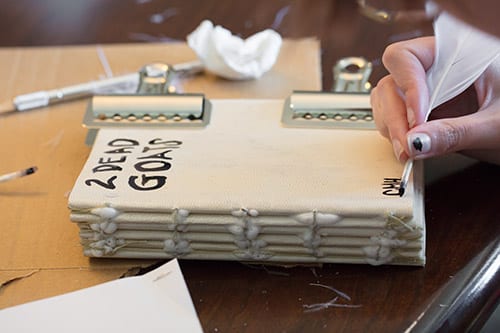
“I refer to my manuscript as my ‘2 dead goats’ in my dorm room. I figured it would make a nice title for whatever I put in there,” Hutchinson said. Ultimately, she decided on a collection of poetry. Other students created books of musical annotation, including one focused on Christmas carols, or copied excerpts from their favorite novels.

